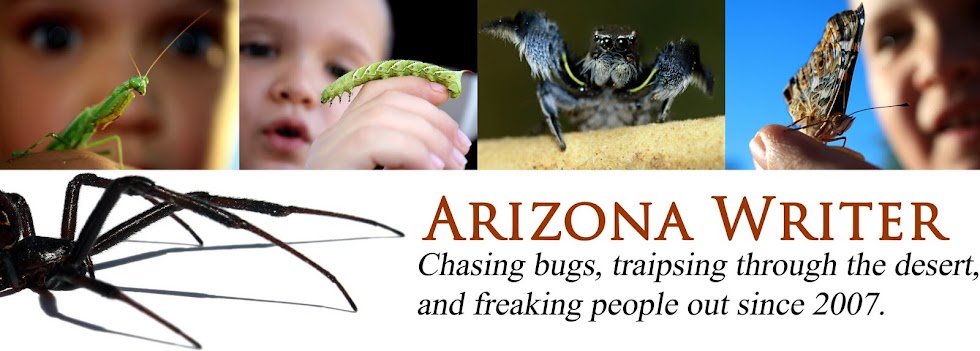Day 50: Fiery skipper, Hylephila phyleus
Can an insect be cute? (I mean, to someone who's not me?) These guys are like little butterfly puppies. The closeups make me want to pet them, seriously.
Day 51: Painted lady, Vanessa cardui
So, I wasn't always a critter expert. Here's how dumb I am. As recently as when David started asking about species, I guessed, when their wings were open, that these were monarch butterflies. If I happened to see them with their wings folded, like here, I thought it was a different species entirely. It wasn't until I saw a "monarch" land and turn into "that other species" that it clicked. These days, I can identify subspecies of painted ladies, and tell a monarch from a queen at fifty paces.
Painted ladies are one of the most widely distributed butterflies in the world, so if you also have orange-and-black-butterflies-that-are-not-monarchs, they're probably painted ladies. They could be queens or soldiers if they really resemble monarchs, or, if they're more closely related to painted ladies, red admirals hundred other types that sort of look the same. But guess "painted lady, or some type of brush-footed butterfly," and you'll sound smart and have a fighting chance of being correct.
What's that? You want real information, not just show-offy blurbs? OK. Painted ladies eat a wide variety of nectar, and their caterpillars prefer leaves of plants in the daisy (Compositaceae) family. They have a wingspan of about 5 to 9 centimeters, which makes them pretty large and noticeable. When their wings are open, they have black wingtips with five white spots and lack white dots in the orange areas.
Also, since they're so common (meaning, you can release them just about anywhere and they'll be fine), if you order one of those butterfly-raising kits, these are kind you usually get. Super fun and easy.
Day 52: Flame skimmer, Libellula saturata
The two I captured here are actually both females, which if you can believe it from the top shot, are the dull ones. Male flame skimmers (I'll include a really old shot of one below, sharing a reed with a blue dasher) are bright, fire-engine red. Entirely red, too, including eyes and wing veins.
Flame skimmers live mainly in the Southwest, because they like it hot, and we've got plenty of that. They frequent warm ponds and even hot springs, and sometimes neighborhoods. They mate from May to September, which means they're starting now, which makes me really happy. Which, in turn, probably makes me really weird.
Day 53: White-crowned sparrow, Zonotrichia leucophrys
Hey, a new record! I was four days into the week before I got to a bird.
White-crowned sparrows winter throughout Arizona. They're really fun to watch feeding on the ground. They stay in huge, hyper groups and scratch (with both legs simultaneously) for seeds.
Day 54: Rock squirrel, Otospermophilus variegatus
These guys are tough.
If you're not in Arizona (or neighboring states, or Mexico), you probably have the similar-looking tree squirrel. These guys look the same, but they're no sissy hide-in-trees squirrels. They prefer mountains, cliffs, canyons, and any rocky habitat they can find, where they excavate shallow burrows. (If they can't find a nice rocky area, they'll use a building.) Biologists have been intrigued by rock squirrels, because they're honestly not as well adapted to non-tree life as ground squirrels and prairie dogs.
That's a squirrel taking on a freaking Gila monster. They've also faced down rattlesnakes and other critters most of us run from. See? Totally badass.
Day 55: Desert spiny lizard, Sceloporus magister (yellow-backed and purple-backed!)
Rough scales, bright colors, and seemingly confident even when you get pretty close. Since my field guide warns "Caution: bites," the confidence is probably because they can handle themselves, thankyouverymuch.
These guys are from the iguana family, about ten inches long, and active during the day. They come in a few subspecies. Recently we captured this yellow-backed one at the Desert Botanical Garden.
My son got a better angle on him. Prickly pear cactus makes a nicer background than whatever I had, and the pose is great. I'm jealous.
Day 56: Ring-necked duck, Aythya collaris
We tend to call these ring-billed ducks, since you can see the double ring on the bill prominently, but the neck, not so much. They do have a faint cinnamon ring on the neck, but it's nearly impossible to spot. (You can see part of it in the shot below.)
